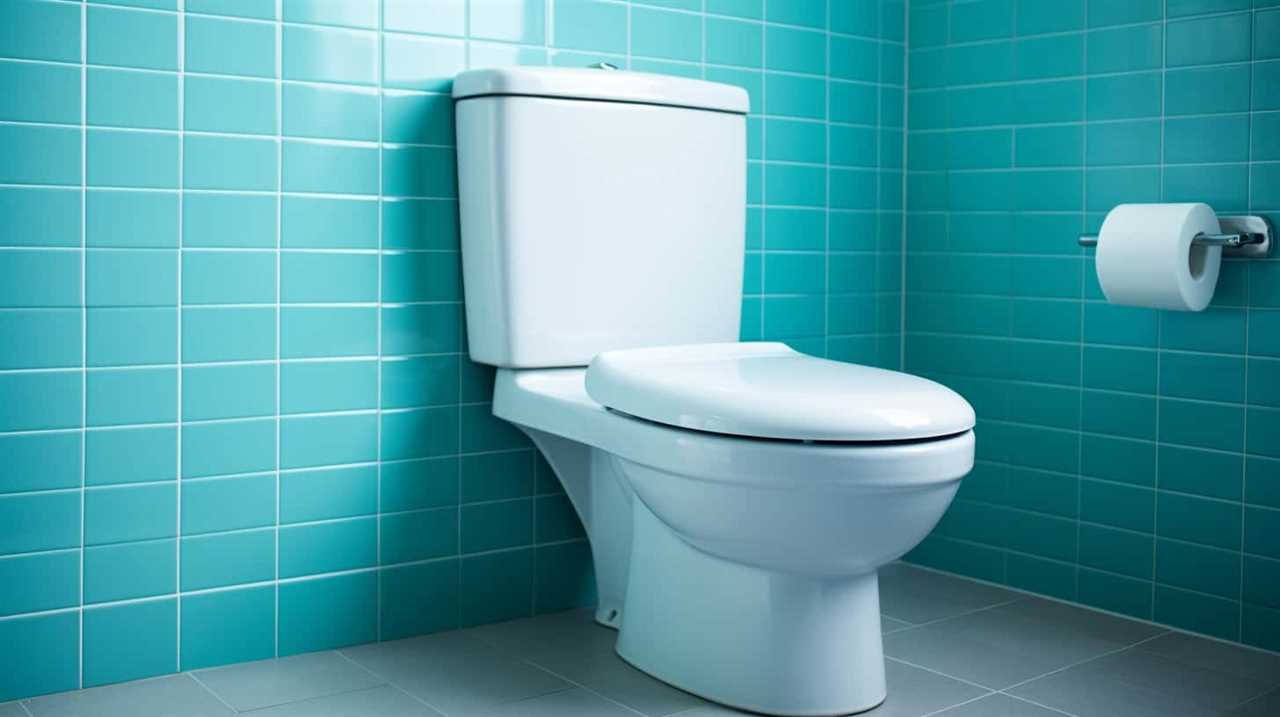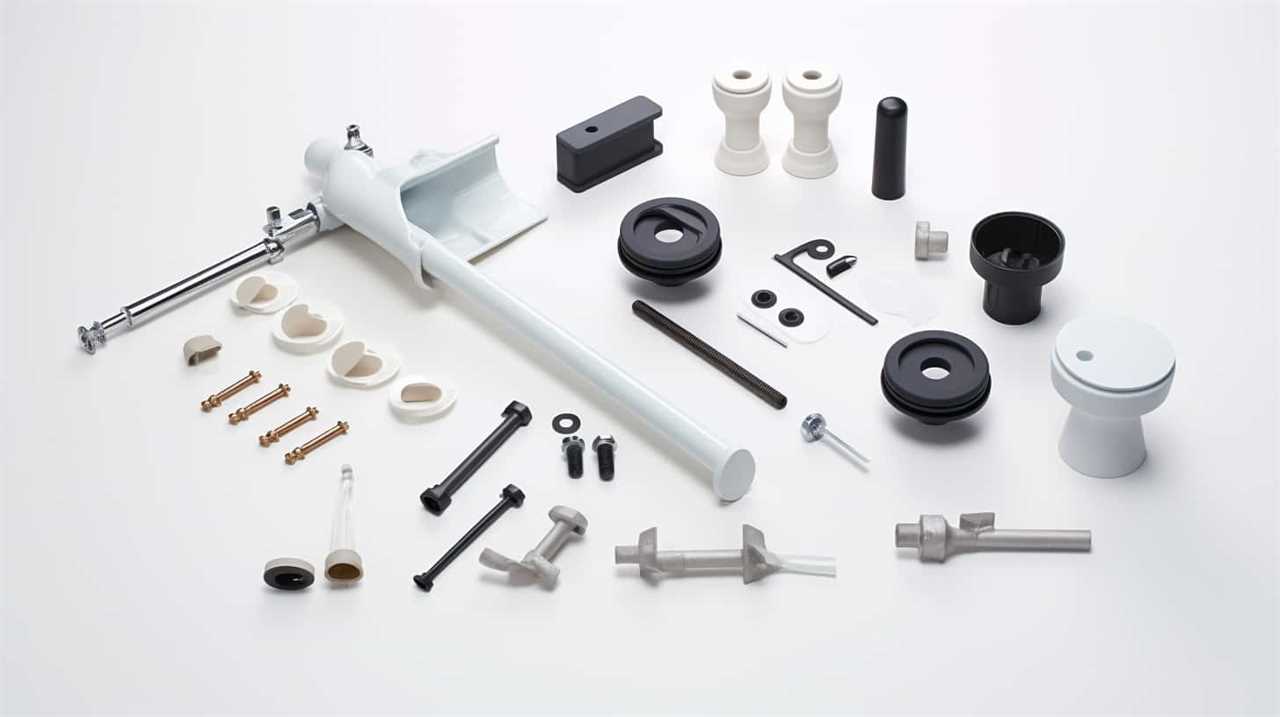Have you ever experienced the horror of a toilet overflow? It’s a nightmare that no one wants to deal with. But did you know that a bad flapper could be the culprit? Yes, that seemingly insignificant rubber piece can wreak havoc on your bathroom.
In this article, we will delve into the world of toilet flappers, explore the signs of a bad one, and discover how it can cause an overflow.
Stay with us to learn how to fix and prevent this dreaded issue.
Key Takeaways
- A bad flapper can cause a toilet to overflow due to its failure to create a proper seal.
- Common causes of a bad flapper include wear, warping, misalignment, and debris buildup.
- Steps to fix a bad flapper and prevent overflow include adjusting the flapper chain length, cleaning the flapper and valve seat, and replacing the flapper if necessary.
- Regular inspection, cleaning, and maintenance of the flapper can help prevent overflow and maintain a functioning toilet.
Understanding the Role of a Toilet Flapper
We need to understand how a toilet flapper works in order to determine if a bad flapper can cause a toilet to overflow.

The toilet flapper mechanism is a crucial part of the toilet’s flushing system. It’s a rubber or plastic valve that’s located at the bottom of the toilet tank. When the toilet is flushed, the flapper lifts up, allowing water to rush into the toilet bowl and create a flush. Once the flush is complete, the flapper seals the opening to prevent water from continuously flowing into the toilet bowl.
However, there are common flapper problems that can occur, such as the flapper becoming worn, warped, or misaligned. These issues can lead to a faulty seal, causing water to continuously leak into the toilet bowl and potentially causing an overflow. Understanding the mechanics of the toilet flapper is essential in identifying and resolving such issues.
Now, let’s move on to discuss the signs of a bad flapper.
Signs of a Bad Flapper
One indicator of a faulty flapper is water continuously leaking into the toilet bowl. This is a common problem that can lead to wasted water and higher water bills.

Other signs of a bad flapper include:
- Flapper not sealing properly: If the flapper doesn’t create a tight seal when it closes, water will continue to flow into the toilet bowl. This can be caused by wear and tear or misalignment of the flapper.
- Flapper worn out or damaged: Over time, the flapper can become worn out or damaged, preventing it from functioning properly. This can result in water constantly leaking into the toilet bowl.
- Flapper chain length: The length of the flapper chain is important for proper operation. If the chain is too short or too long, it can interfere with the flapper’s ability to seal correctly.
To test a toilet flapper, you can perform a simple dye test. Add a few drops of food coloring into the toilet tank and wait for a few minutes. If the colored water appears in the toilet bowl without flushing, it indicates a faulty flapper that needs to be replaced.
How a Bad Flapper Can Cause a Toilet to Overflow
A bad flapper can cause a toilet to overflow when it fails to create a proper seal, allowing water to continuously flow into the toilet bowl. This can occur due to common causes such as deterioration, misalignment, or debris buildup on the flapper.
When the flapper doesn’t seal tightly, water from the tank leaks into the bowl, causing the water level to rise. If left unresolved, this can lead to an overflow situation.

To troubleshoot a bad flapper, you can visually inspect it for any signs of damage or misalignment. Additionally, you can clean the flapper and the surrounding area to remove any debris that may be affecting its proper functioning.
By addressing these issues, you can prevent an overflow and ensure the proper functioning of your toilet.
In the next section, we’ll discuss the steps to fix a bad flapper and prevent overflow.
Steps to Fix a Bad Flapper and Prevent Overflow
To fix a bad flapper and prevent overflow, we can take the following steps:

- Adjust the flapper chain length: Ensure that the chain connecting the flapper and flush handle is properly adjusted. If it’s too short, the flapper may not close fully, allowing water to continuously flow into the bowl. If it’s too long, the flapper may not open fully, resulting in inadequate flushing.
- Clean the flapper and valve seat: Sediment and mineral deposits can accumulate on the flapper and valve seat, causing them to become ineffective. Use a soft brush or cloth to clean these components, ensuring a proper seal.
- Replace the flapper if necessary: If the flapper is damaged or worn out, it may not seal properly, leading to toilet clogs and overflow. Replace it with a new one that matches your toilet’s make and model.
By following these steps to adjust a flapper and address common causes of toilet clogs, you can prevent overflow and maintain a properly functioning toilet.
Now, let’s move on to additional tips for maintaining a healthy flapper and preventing toilet overflow.
Additional Tips for Maintaining a Healthy Flapper and Preventing Toilet Overflow
To maintain a healthy flapper and prevent toilet overflow, we should regularly inspect and clean the flapper and valve seat. This is crucial for prolonging the lifespan of the flapper and ensuring its proper functioning.
One important tip is to check for any signs of wear or damage, such as cracks or tears, and replace the flapper if necessary. Additionally, it’s essential to clean the flapper and valve seat regularly to remove any mineral deposits or debris that may affect their performance.

Common mistakes to avoid when maintaining a toilet flapper include using harsh chemicals or abrasive cleaners, as these can damage the flapper material. It’s also important to avoid forcefully closing the flapper, as this can cause it to wear out faster.
Frequently Asked Questions
Can a Bad Flapper Be Fixed or Does It Need to Be Replaced?
When a toilet flapper fails, it can cause various issues, including overflow. Whether it can be fixed or needs replacement depends on the extent of damage. Signs of a failing flapper include water running continuously and incomplete flushes.
How Often Should I Check the Condition of My Toilet Flapper?
We regularly check the condition of our toilet flapper to prevent overflow. Signs of flapper deterioration include leaks, constant running, and difficulty flushing. Proper toilet flapper maintenance ensures optimal functioning and prevents water waste.
Are There Any Signs That Indicate a Toilet Flapper Is About to Go Bad?
Yes, signs of a deteriorating flapper include water constantly running in the toilet bowl, inconsistent flushing, and a weak flush. Regular toilet flapper maintenance can prevent these issues and avoid toilet overflow.

Can a Bad Flapper Cause Other Plumbing Issues Besides Toilet Overflow?
Yes, a bad flapper can cause other plumbing issues besides toilet overflow. It can lead to clogged pipes and water pressure issues. Regular maintenance and replacing the flapper when needed can prevent these problems.
Are There Any Specific Brands or Types of Flappers That Are More Prone to Causing Toilet Overflow?
Yes, certain types or brands of flappers can be more prone to causing toilet overflow. Regular toilet flapper maintenance can help prevent overflow. Common causes of toilet overflow include a bad flapper, clogged drain, or a malfunctioning fill valve.
Conclusion
Toilet overflows can be a messy and inconvenient problem, often caused by a faulty flapper. Understanding the signs of a bad flapper and how it can lead to overflow is crucial for preventing future issues.
By following the steps to fix a bad flapper and practicing regular maintenance, you can ensure a healthy flapper and avoid the unpleasantness of an overflowing toilet.

Stay on top of this vital component to keep your bathroom experience worry-free.










